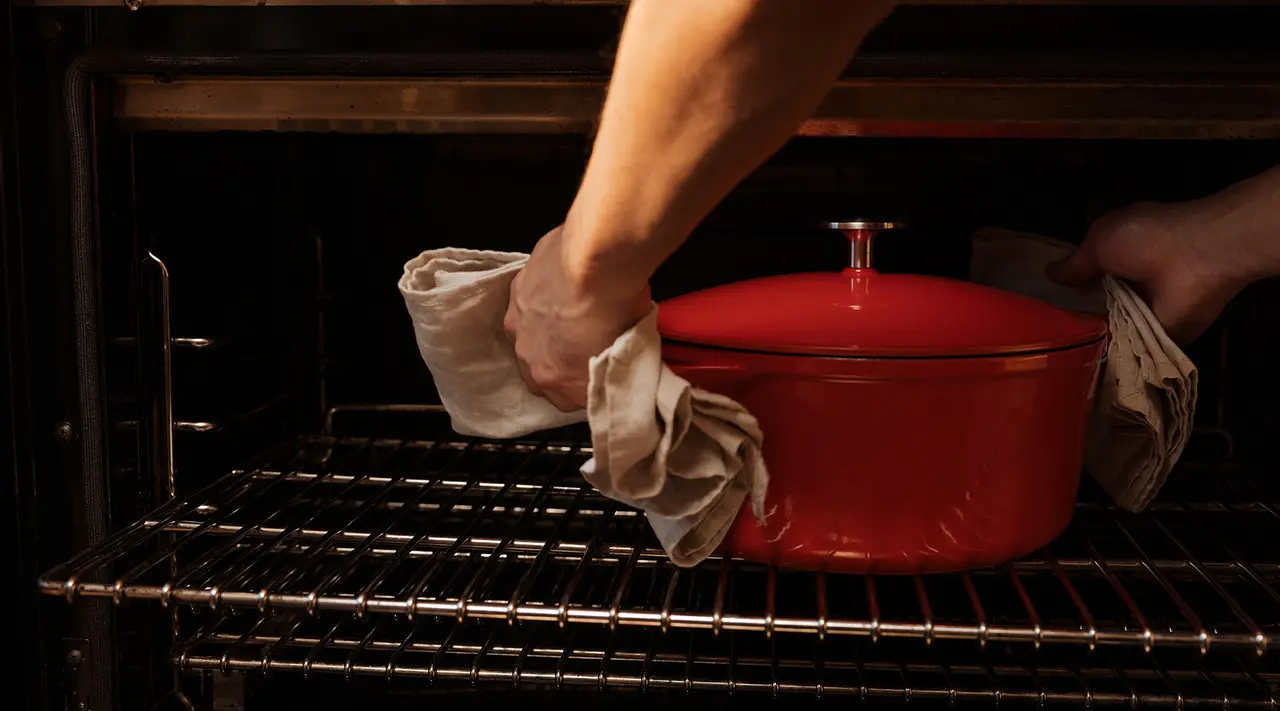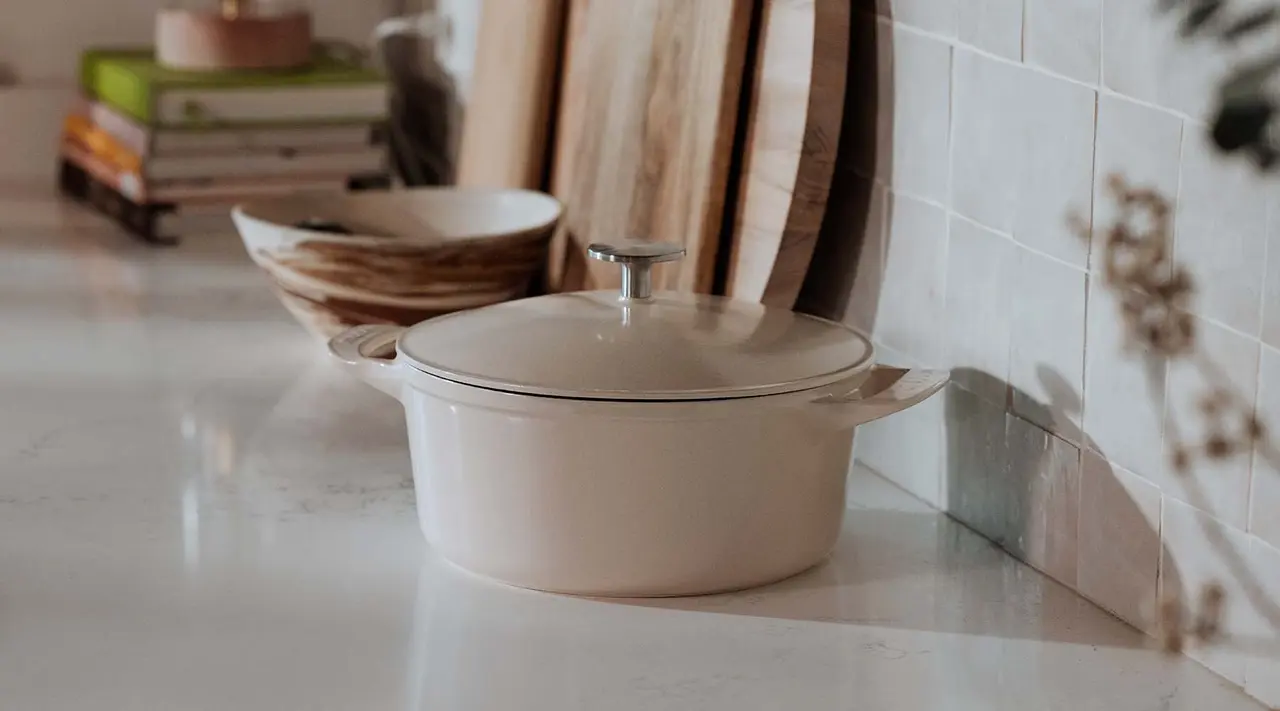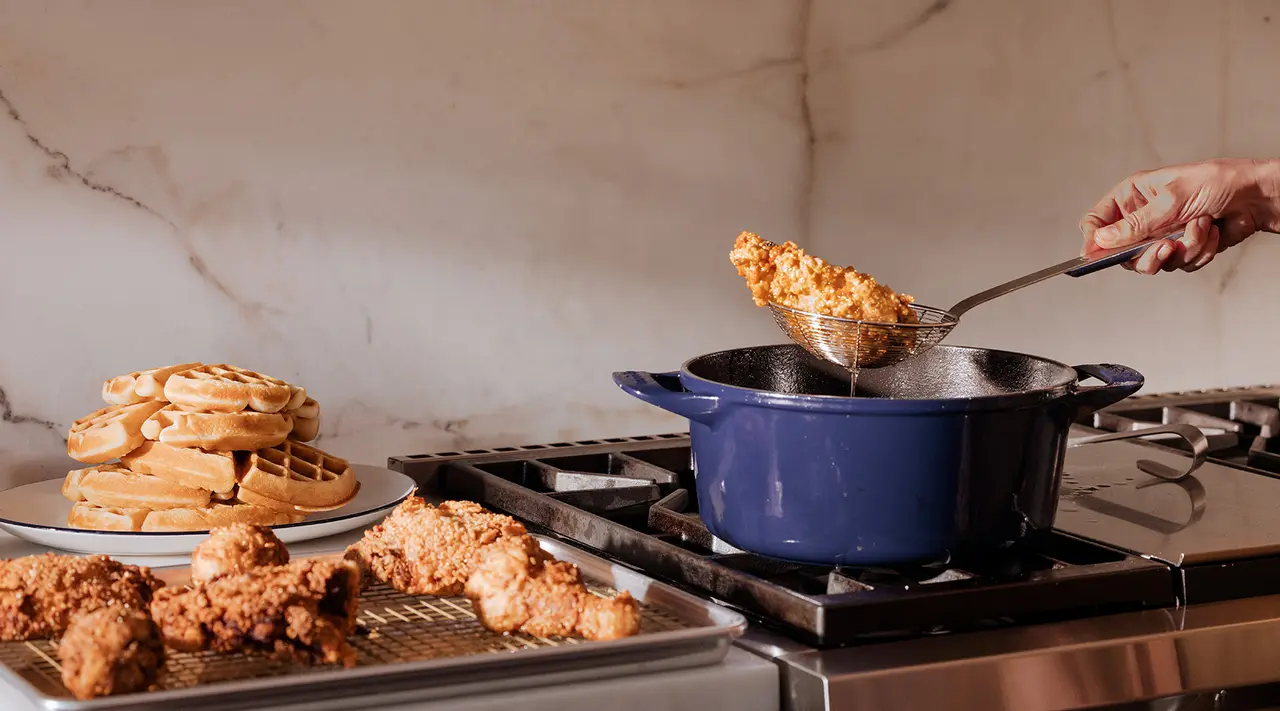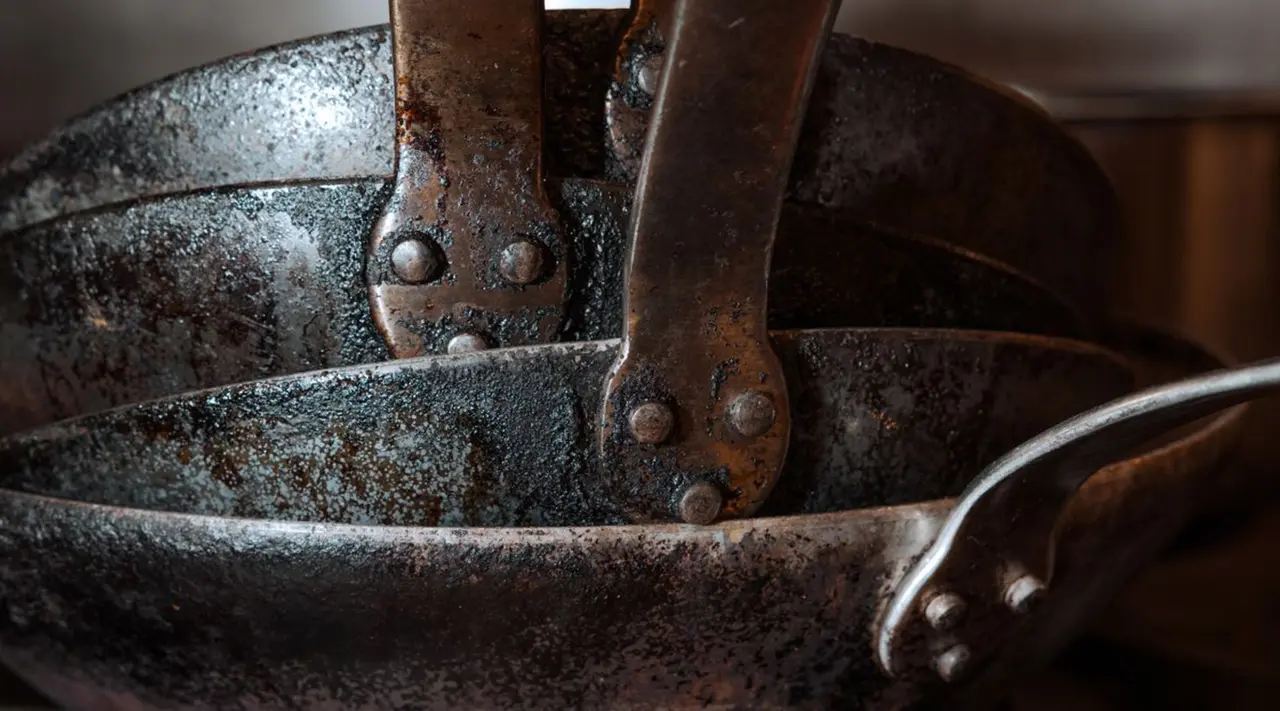Dutch ovens are one of those pieces you'll cook with for years and years—and as such, you'll need to care for it so it can withstand decades of family recipes, dinner parties, and soup seasons.
While you don't need to season them (as you would a cast iron or carbon steel pan) and their enamel coating is forgiving to a point, here are some dos and don’ts for how to make sure you are getting the most out of your new Dutch oven.
Always Use Cooking Fat

Despite the fact that the enamel coating provides a naturally non-stick surface, make no mistake, cooking fat is your friend. Oils and butters not only add crucial (and delicious) flavor to your dish, they also help evenly distribute heat around the bottom of the pan.
Especially if you are doing a stove-to-oven dish, it’s important that you insulate your Dutch oven from the oven’s intense heat. Cooking without a layer of fat can cause either the bottom or outside of the pan to scorch, which can lead to cracks in the enamel and/or food getting stuck—which in turn leads to a more labor intensive clean-up.
Start by adding a drizzle of fat or oil to the bottom of the pan, then heat on low until the pan is fully warmed. After this, you can increase the heat to medium to achieve the perfect sear. When baking things like bread, place the cold Dutch oven in the oven and let them slowly preheat together.
Save yourself the trouble by making sure your Dutch oven is sufficiently oiled and heated before you start cooking.
Be Conscious of Heat Levels

Enameled Dutch ovens are great at retaining heat—in fact, this is one of their most famous qualities. This means that you don’t need to overdo it on heat—in fact, you rarely need to raise it above medium. The use of high heat can damage your enamel coating, leading to the same scorching and burning that can occur when the pan is heated while empty.
It’s also important to avoid thermal shock, or drastic changes in temperature. Just as you are cautious with enamel or porcelain bakeware, make sure you are not taking your Dutch oven off the stove and plunging it directly into cold water. This can cause chips or cracks in the enamel, damaging the longevity and functionality of the piece.
Be mindful of setting your hot pot on cold stone countertops or wooden tables, as they may be damaged from this residual heat as well.
Be Delicate with Utensils

While durable, the enamel coating of your Dutch Oven is not impervious to damage. If you want to maximize the life and appearance of your prized piece of cookware, opt for silicone or wooden cooking tools—silicone’s flexibility lends itself to delicate food and sauces, while wood is best for scraping and lifting. If using metal utensils, don't saw or scrape the enamel too aggressively.
Wash by Hand

We recommend only washing your Dutch oven by hand. To do so, we recommend using a sponge—the soft variety or a plastic scrubby one, never steel wool or anything too abrasive. Do not soak your Dutch oven overnight, as the lip of both the pot and the lid is usually unfinished and can rust if left in water for a prolonged period of time.
If you are dealing with tough stains or stuck food, check out this more in-depth article about cleaning your Dutch oven.
Handle With Care

The easiest way to damage your Dutch oven is to chip the enamel on something else in your kitchen. We recommend storing your Dutch oven away from other pieces of cookware. Leaving it in a cabinet carelessly stacked among metal and even other enamel pieces exposes it to unnecessary risks.
However, our opinion is that the stove top is really the best place to keep it. Seeing this beautiful piece of cookware everyday will remind you to cook in it, and after all, who says a Dutch oven can’t be a useful piece of art anyway?
Ready to Shop?
As you've learned, caring for a Dutch oven isn't nearly as tricky as it may seem from the outside. With a little conscious care, you can keep this heirloom piece looking its best for years to come.































